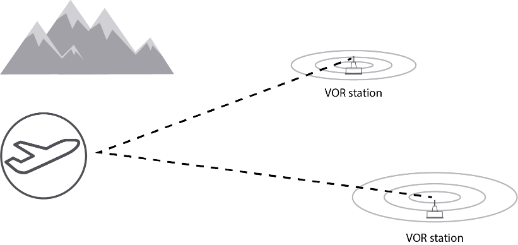
Smart Field Tests for Smarter Airports
Air travel will get a facelift in the near future thanks to modern technologies like the Internet of Things (IoT) and 5G. Smart airports will improve passengers’ travel experiences and make operations more efficient. Improvements include almost-instant ticket issuance, automated security through facial recognition, upgraded services via robotics, and artificial intelligence (AI)-enhanced logistics.
Airports are the most significant transportation infrastructure in many countries and the most critical component in the entire air transport industry. They are responsible for the takeoff, landing, and trip management of thousands of flights per day. To do this successfully, airports operate numerous modern electronic devices and monitoring networks that have to be maintained on a regular basis. In this blog, I will describe one important electronic system that keeps airports running smoothly — VOR / DME— and cover the basic field maintenance tests airport technicians perform on this system.
Very High Frequency Omnidirectional Range and Distance Measuring Equipment Systems
Better known as VOR and DME, these two systems work together as one system that maintains the aircraft on its flight path. Airports throughout the world use this joint system that involves beacon stations that transmit very high frequency (108 to 117.95 MHz) radio waves to moving aircraft and onboard VOR receivers, shown in Figure 1. VOR radio waves travel in straight lines and are not affected by weather conditions, making it very reliable in a variety of environments.

VOR provides general bearing guidance to an aircraft as it approaches an airport. The system uses an omnidirectional signal as its beacon, while an array of circularly arranged antennas transmit signals with distinctive phases. The phase difference between the master signal and the second signal indicates the aircraft’s bearing to the airport. VOR / DME, along with GPS, work together to provide directional information to the aircraft and measure the distance between the aircraft and the ground station so the aircraft can accurately identify its positioning. The VOR / DME system is one of the key equipment pieces for the safe operation of the airport — safeguarding the normal takeoff and landing of hundreds of flights every day.
Since successful airport operation depends on the VOR / DME system, airport equipment maintenance teams execute these routine tests to keep the system performance optimal:
- antenna and cable measurements – return loss, fault location identification, and cable loss during transmission
- vector network analysis – insertion loss and phase length
- radar transmitter / DME pulse power measurements (Figure 2.)

Field Assurance Testing for Airports and Air Traffic Control Systems
Keysight’s FieldFox handheld analyzer plays a vital role in field testing for the air transport industry. Because FieldFox has over twenty RF measurement functions packed into a portable unit, airport maintenance personnel only carry one instrument with them when performing routine tests on systems. Its ability to perform multiple tests — including cable and antenna analysis, spectrum analysis, vector network analysis, pulse power measurement, and more — improves testing efficiency and lowers the cost of maintenance since users don’t have to buy several pieces of equipment.
When characterizing radar pulses at higher frequencies as a function of time, FieldFox also pairs with a USB peak power sensor to accurately measure signals above its maximum frequency. For example, if you need to measure a 53 GHz repeating monopulse, a 26.5 GHz FieldFox can act as the controller of a 53 GHz USB peak power sensor, shown in Figure 4. This frequency extension capability along with user-installable measurement software makes FieldFox a versatile instrument that grows and adapts with the needs of the air transport industry.

Conclusion
Airports Council International predicts global airport traffic will double by 2031. This increase in air traffic will prompt the construction of new airports plus upgrades and expansions to current airports. Service engineer teams responsible for field testing equipment in airports will have to plan for this new era of smart aviation. Keysight’s FieldFox handheld analyzers are solutions capable of testing current and future technologies, making field maintenance more efficient for smart airports.
The VOR / DME system is just one of several vital electronic systems that the air transport industry relies on for successful operation. Learn more about field testing the Instrument Landing System (ILS) and electromagnetic environment of an airport in the whitepaper, “Smarter Airports: Field Assurance for Airports and Air Traffic Control Systems.”
Click here to find out more about Keysight's avionic solutions.